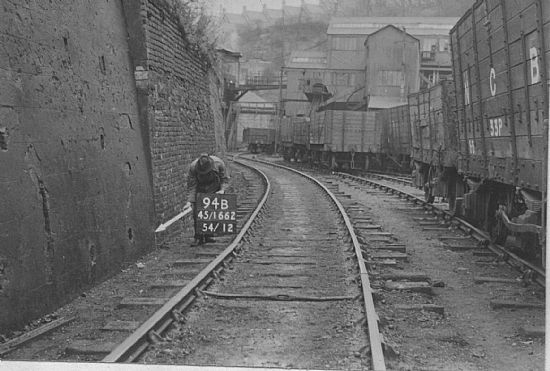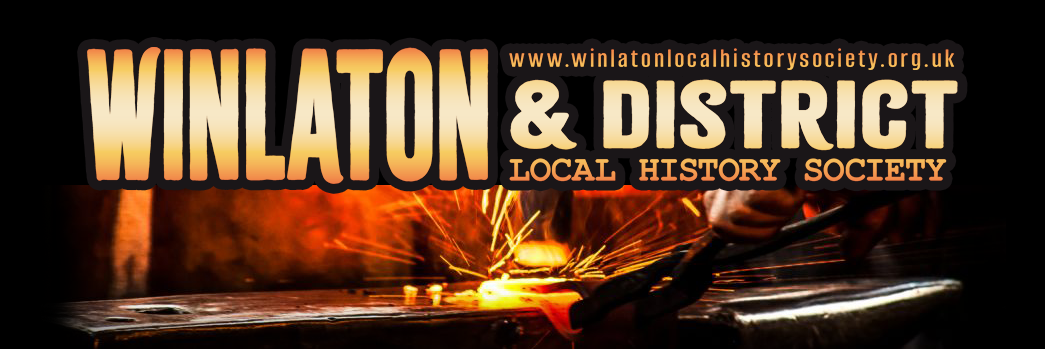The main pits in Blaydon Burn were the Bessie and Mary drift mines. There was also the Edward pit – Milner’s pit associated with Massey’s forge as well as a Freehold pit.
THE FREEHOLD PIT began boring in 1852, it was rectangular in shape and sunk on the Towneley Royalty. The coal was leased to the Stella Coal Company and the clay to Mr. Cowan. Daubenton’s bats roost in the Freehold Weir. There are 16 species of bat in UK of which four are found at Blaydon Burn, all insectivores and their roosts are protected by Wildlife & Countryside Act 1981 and Habitat Regulations 1994. Noctulle bats are found near the flyover they live for up to 20 years, fly at 16mph and scoop insects with their tails. Occasionally they take small fish. Wingspan = 25cm. Weigh 7-12g.Young = 1/3 size of adult when born, and fully weaned @ 6-8wks.
THE EDWARD PIT – all that remains is the entrance to the pit which was disused by 1896. The entrance was opened up again when the coke works and tar works were in operation and finally bricked up in the 1950’s when the coke works ceased production. A skull and crossbones was painted on the bricked up arch way to deter others and was still faintly visible until 2007 – sadly now obscured.
The MARY DRIFT closed in 1953 while the BESSIE DRIFT closed in 1956 both pits having been in operation since the 1850’s. The output of both pits was coals and fireclay with an output of 100,000 tons per year and a seam 2’ 10”. The work force averaged 400 rising to over 1000 during the two world wars, but down to 223 by 1956. An inventory following nationalisation of the pits in 1947
found the Blaydon Burn Colliery to be uneconomic and from then it was under threat of closure. The collieries of Priestman Collieries Ltd., Blaydon Burn Colliery, Axwell Park and Victoria Garesfield had lost money for the company over a number of years but this had
been acceptable due to the savings made to the Ottovale Coke Works by having a close supply of coal.
We usually think of a coal mine as hole in the ground – here at the Bessie the mine is half way up a hillside – of course it’s a drift mine burrowing back into the hillside. These pits didn’t have any disasters – a disaster is classed as 5 or more killed in one incident – but 52 workers did lose their lives over the years – mostly accidents involving wagons and being crushed – each one a personal tragedy for the family concerned.
The miners worked in pairs – the hewer and his “marra” – each tub held 8cwt ( half ton) and the miners were expected to fill 8-10 tubs per shift. The coal was pulled out of the pit in small tubs on a narrow gauge line pulled by pit ponies – three tubs at a time – and the boys led the ponies. When a full inventory was taken after nationalisation in 1947 there were 65 working pit ponies at Blaydon Burn. Pit ponies are bred Shetland/Galloway cross to be strong and no more than 4’6” tall. Ponies in drift mines are stabled above ground and the foundations of the stables can still be seen.
The former coal drops show evidence of small gauge rail line still on top of the structure and the high wall with a crack was part of a shed for coal screens – mesh floors to separate coal – the remaining wall now used as a nesting site by Pipistrelle ( both Common and Soprano ) bats. Coal from the Bessie Drift was carried on an elevated platform across the valley to the ‘drops’ and transferred to the wagons below. These structures date from the Priestman ownership of the site first appearing on the 1914 OS map. Tree thinning was
carried out in this area to remove sycamore and make room for oak and hazel. Collieries were once such a feature of the north east landscape that most of us old enough to remember the pits didn’t pay much attention at the time. Now it’s very difficult to find pictures of working pits and my pictures of the Blaydon Burn pits in operation, courtesy John Boothroyd of Gateshead Libraries, show pictures of ’the man in the mac’ , the surveyor marking sites for the 1952 ordnance survey map. The view we have of the colliery is accidental as the pictures were taken to show the sites of benchmarks.

Blaydon Burn Colliery 1952
After miners had succeeded in forming a miners union from 1873 onwards miners lodges held public demonstrations at many centres. Joseph Cowen jnr. Supported the miners in their reasonable demands for shorter hours and that the miner should have a greater measure of political power. He spoke at the miners gala at The Spen in August 1873. There had been a manhood suffrage demonstration on the Summerhill in March that year and a large meeting on the Town Moor, Newcastle in April attended by workmen from Blaydon and Winlaton. It was estimated 60,000 were at the Town Moor. They paraded through Newcastle with their banners and the men from Blaydon and Winlaton carried a large red banner with bold lettering “ Manhood Suffrage is every mans right” and another in white
“ We ask for universal suffrage as our right”. A mass meeting of miners was held in the recreation ground at Winlaton in April 1889 with the following lodges represented: Addison, Stargate, Blaydon, Blaydon Burn, Blaydon Main, Spen and Rowlands Gill. The complete history of mining and the fight for workers pay and conditions and political rights should be read more fully elsewhere. However, I do need to mention another demonstration which started at Blaydon Station in 1884 and marched through the streets. A banner had been especially made for the occasion. It represented the House of Lords in the form of an old oak tree standing in the path of progress and Mr. Gladstone ( the Prime Minister) portrayed with an axe and the emblem ‘Public Opinion’ clearing away the obstruction. At the top of the banner was the word ‘Rentrenchment’ and at the foot ‘ I have my orders, down you must come’. The various collieries paraded with their individual banners. The Reform Act of 1884 passed under William Gladstone extended the franchise to all men except domestics and
added almost three million more working men to the register. Although many miner’s banners have survived and been preserved sadly there is no trace of the Blaydon Burn Banner. Efforts to trace the banner or even a photograph of it have proved unsuccessful.
